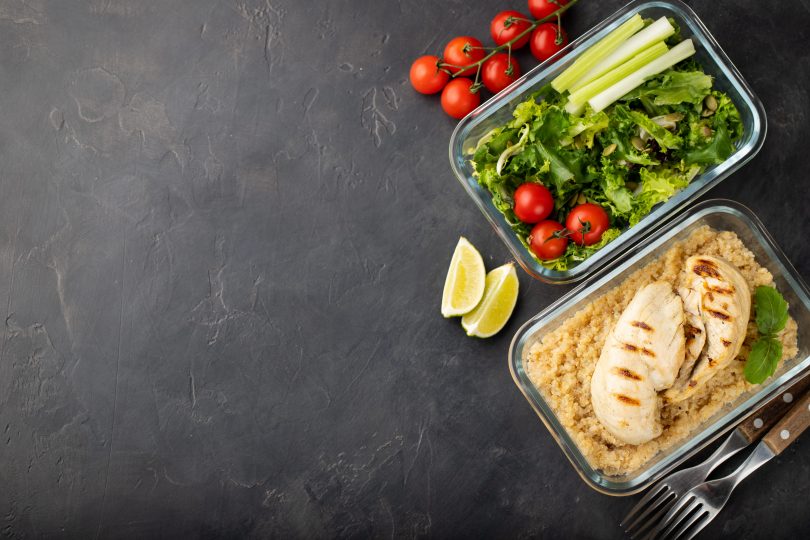When most people think of the convenience industry in Australia, they likely picture one of the many 7-Eleven and EzyMart stores that dot our landscape. As it turns out, they’re right to do so. According to the Australasian Association of Convenience Stores (AACS), our convenience stores regularly best the grocery sector in the quest to supply the nation with foodstuffs. Those results reflect a population that’s always on the go, and always on the lookout for better ways to simplify their daily lives.
This drive for convenience is fuelling a boom in the market for food prep services throughout Australia, as busy Aussies look for ways to avoid the hassle of making dinner without turning to fast food and other unhealthy options. This boom presents a unique opportunity for entrepreneurs looking to start a business in a new and growing market sector which still has plenty of room for newcomers.
For those who believe that they need culinary flair to succeed in the food prep industry – think again. All you need is the right idea, the right equipment, and a willingness to learn.
Here’s an overview of what to do to start a food prep business in Australia.
Find the Right Niche
The food prep industry is all about convenience, but if that were the only driving force, anyone who could create a high volume of meals could corner the market in a flash. The reason that doesn’t happen is that the consumers who are interested in meal prep services all have different motivations and needs that drive them to look for a provider that fits their lifestyle. The key to success in the market is to identify a niche that has steady demand in whatever the business’s service area will be. Common food prep niches include:
- Low carbohydrate meals
- Gluten-free meals
- Calorie-restricted meals
- Vegan and vegetarian fare
- Foreign specialties
The reason the above niches tend to work so well is that they all require careful meal planning or specialised knowledge, which makes them more research and planning-intensive than the average producer is willing to deal with.
Study the Legal Requirements
When starting a food prep business, it’s not uncommon to begin operations out of a home kitchen. In Australia, there are some detailed and specific requirements that come with such an arrangement, and they must be met to maintain compliance with the law. In addition, there may also be licensing requirements, which vary between states and territories. It’s important to check with the relevant local authorities that you’re doing everything in accordance with regulations. Failing to do this can be a fatal mistake for a new food prep business, both because of the risk of a shutdown, as well as the liability that can arise from failing to follow food safety regulations and related rules.
Design a Menu and Test It
The next step in starting a meal prep business is to design a menu that will do well in the market niche that you’ve selected. At this stage, it’s a good idea to enlist the help of a professional nutritionist and a qualified chef that can help you through iterations of the dishes that will become your launch-day menu. The good news is that no matter where in Australia you’re trying to set up shop, you should have no trouble finding people willing to help you test your menu once you’ve got it ready. Organise focus group testing of your intended menu at least a month or two before you need to make any final decisions. Remember, there’s no accounting for taste, so the goal is to find a menu that makes the widest segment of the market as happy as possible – not to reinvent the wheel.
Build a Customer Base through Marketing
The last step in launching a food prep business is to get the word out to your target audience. To do this, you could stage a variety of public events, like cooking demonstrations in places where busy people gather. To that end, you may be surprised by how many large companies will allow you to demonstrate meal preparation to their employees. They view such events as team-building exercises, and if they don’t have to cover the cost, many will jump at your offer. Make sure to arrive with a full arsenal of marketing materials, such as printed menus, price lists, and nutritional information. If you do especially well, you may even come away from an event having signed up some new clients – which is the best possible outcome.
Evolve and Innovate
Once you’re up and running with your first group of clients, make sure to solicit as much feedback as possible about what they like and dislike about your offerings. They may be able to give you some valuable clues as to how to refine your menu, or even suggest totally new dishes you hadn’t considered. Whenever possible, take such suggestions into consideration and put them through the same iterative testing process that your original menu went through. Don’t be afraid to change things up if you find a new dish or a twist on an existing item that works better than the original. That’s the real key to long term success in the food prep industry – remembering that tastes change and that customers can be fickle. If you evolve your menu and adapt to those changes, though, you’ll amass an army of satisfied customers that will stick with you for years to come.
“The opinions expressed by BizWitty Contributors are their own, not those of BizCover and should not be relied upon in place of appropriate professional advice. Please read our full disclaimer."







